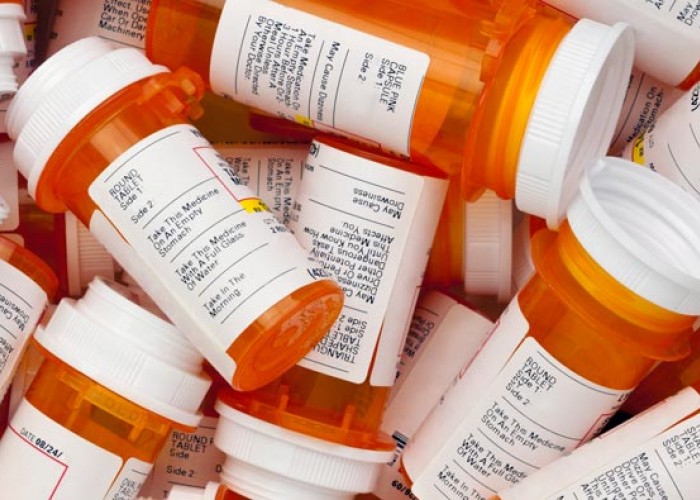Learning the Language of the Heart
A glossary of heart health terms
By Debra Gibson Isaacs
There is a distinct language surrounding heart health and the treatment of heart disease, and it’s helpful for a patient and family to familiarize themselves with terms they’ll be hearing. Here are some of the most common terms and the definition of those terms. These are from a more comprehensive list developed by The Texas Heart Institute. Other definitions are available at texasheart.org.
Jump to: A-C | D-E | F-K | L-O | P-S | T-Z
A-C
Acquired heart disease
Heart disease that arises after birth, usually from infection or through the build-up of fatty deposits in the arteries that feed the heart muscle.
Amiodarone
A kind of medicine (called an antiarrhythmic) used to treat irregular heart rhythms such as atrial fibrillation and ventricular tachycardia. It works by regulating nerve impulses in your heart. Amiodarone is mainly given to patients who have not responded to other antiarrhythmic medicines.
Aneurysm
A sac-like protrusion from a blood vessel or the heart, resulting from a weakening of the vessel wall or heart muscle.
Angina or angina pectoris
Chest pain that occurs when diseased blood vessels restrict blood flow to the heart.
Angiography
An X-ray technique in which dye is injected into the chambers of your heart or the arteries that lead to your heart (the coronary arteries). The test lets doctors measure the blood flow and blood pressure in the heart chambers and see if the coronary arteries are blocked.
Angioplasty
A nonsurgical technique for treating diseased arteries by temporarily inflating a tiny balloon inside an artery.
Antiarrhythmics
Medicines used to treat patients who have irregular heart rhythms.
Anticoagulant
Any medicine that keeps blood from clotting; a blood thinner.
Aorta
The largest artery in the body and the main vessel to supply blood from the heart.
Aortic valve
The valve that regulates blood flow from the heart into the aorta.
Arrhythmia (or dysrhythmia)
An abnormal heartbeat.
Arrhythmogenic right ventricular dysplasia (ARVD)
A type of cardiomyopathy with no known cause. It appears to be a genetic condition (passed down through a family's genes). ARVD causes ventricular arrhythmias.
Arteriography
A test that is combined with cardiac catheterization to visualize an artery or the arterial system after injection of a contrast dye.
Artery
A vessel that carries oxygen-rich blood to the body.
Arteritis
Inflammation of the arteries.
Arteriosclerosis
A disease process, commonly called “hardening of the arteries,” which includes a variety of conditions that cause artery walls to thicken and lose elasticity.
Atherectomy
A nonsurgical technique for treating diseased arteries with a rotating device that cuts or shaves away material that is blocking or narrowing an artery.
Atherosclerosis
A disease process that leads to the buildup of a waxy substance, called plaque, inside blood vessels.
Atrial flutter
A type of arrhythmia in which the upper chambers of the heart (the atria) beat very fast, causing the walls of the lower chambers (the ventricles) to beat inefficiently as well.
Atrial tachycardia
A type of arrhythmia that begins in the heart's upper chambers (the atria) and causes a very fast heart rate of 160 to 200 beats a minute. A resting heart rate is normally 60 to 100 beats a minute.
Atrioventricular block
An interruption or disturbance of the electrical signal between the heart's upper two chambers (the atria) and lower two chambers (the ventricles).
Bacterial endocarditis
A bacterial infection of the lining of the heart's chambers (called the endocardium) or of the heart's valves.
Balloon catheter
A long tube-like device with a small balloon on the end that can be threaded through an artery. Used in angioplasty or valvuloplasty.
Balloon valvuloplasty
A procedure to repair a heart valve. A balloon-tipped catheter is threaded through an artery and into the heart. The balloon is inflated to open and separate any narrowed or stiffened flaps (called leaflets) of a valve.
Bradycardia
Abnormally slow heartbeat.
Bypass surgery
that can improve blood flow to the heart (or other organs and tissues) by providing a new route, or “bypass” around a section of clogged or diseased artery.
Cardiac arrest
The stopping of the heartbeat, usually because of interference with the electrical signal (often associated with coronary heart disease).
Cardiac catheterization
A procedure that involves inserting a fine, hollow tube (catheter) into an artery, usually in the groin area, and passing the tube into the heart. Often used along with angiography and other procedures, cardiac catheterization has become a primary tool for visualizing the heart and blood vessels and diagnosing and treating heart disease.
Cardiomegaly
An enlarged heart. It is usually a sign of an underlying problem, such as high blood pressure, heart valve problems, or cardiomyopathy.
Cardiomyopathy
A disease of the heart muscle that leads to generalized deterioration of the muscle and its pumping ability.
Cardiopulmonary bypass
The process by which a machine is used to do the work of the heart and lungs so the heart can be stopped during surgery.
Cardiopulmonary resuscitation (CPR)
An emergency measure that can maintain a person's breathing and heartbeat. The person who performs CPR actually helps the patient's circulatory system by breathing into the patient's mouth to give them oxygen and by giving chest compressions to circulate the patient's blood. Hands-only CPR involves only chest compressions.
Cardioversion
A technique of applying an electrical shock to the chest to convert an abnormal heartbeat to a normal rhythm.
Congestive heart failure
A condition in which the heart cannot pump all the blood returning to it, leading to a backup of blood in the vessels and an accumulation of fluid in the body's tissues, including the lungs.
Coronary arteries
Two arteries arising from the aorta that arch down over the top of the heart and divide into branches. They provide blood to the heart muscle.
Coronary artery anomaly (CAA)
A congenital defect in one or more of the coronary arteries of the heart.
Coronary artery bypass (CAB)
Surgical rerouting of blood around a diseased vessel that supplies blood to the heart. Done by grafting either a piece of vein from the leg or a piece of the artery from under the breastbone.
Coronary artery disease (CAD)
A narrowing of the arteries that supply blood to the heart. The condition results from a buildup of plaque and greatly increases the risk of a heart attack.
Coronary heart disease
Disease of the heart caused by a buildup of atherosclerotic plaque in the coronary arteries that can lead to angina pectoris or heart attack.
Coronary occlusion
An obstruction of one of the coronary arteries that hinders blood flow to the heart muscle.
Coronary thrombosis
Formation of a clot in one of the arteries carrying blood to the heart muscle. Also called coronary occlusion.
D-E
Defibrillator
A device that helps restore a normal heart rhythm by delivering an electric shock.
Dyspnea
Shortness of breath.
Echocardiography
A method of studying the heart's structure and function by analyzing sound waves bounced off the heart and recorded by an electronic sensor placed on the chest. A computer processes the information to produce a one-, two- or three-dimensional moving picture that shows how the heart and heart valves are functioning.
Edema
Swelling caused by fluid accumulation in body tissues.
Ejection fraction
A measurement of the rate at which blood is pumped out of a filled ventricle. The normal rate is 50 percent or more.
Electrocardiogram (ECG or EKG)
A test in which several electronic sensors are placed on the body to monitor electrical activity associated with the heartbeat.
Electroencephalogram (EEG)
A test that can detect and record the brain's electrical activity. The test is done by pasting metal disks, called electrodes, to the scalp.
Electrophysiological study (EPS)
A test that uses cardiac catheterization to study patients who have arrhythmias (abnormal heartbeats). An electrical current stimulates the heart in an effort to provoke an arrhythmia, determine its origin, and test the effectiveness of medicines to treat the arrhythmias.
Endocardium
The smooth membrane covering the inside of the heart. The innermost lining of the heart.
Enlarged heart
A state in which the heart is larger than normal because of heredity, long-term heavy exercise, or diseases and disorders such as obesity, high blood pressure, and coronary artery disease.
Exercise stress test
A common test to help doctors assess blood flow through coronary arteries in response to exercise, usually walking, at varied speeds and for various lengths of time on a treadmill. A stress test may include use of electrocardiography, echocardiography, and injected radioactive substances. Also called exercise test, stress test, nuclear stress test, or treadmill test.
F-K
Fibrillation
Rapid, uncoordinated contractions of individual heart muscle fibers. The heart chamber involved can't contract all at once and pumps blood ineffectively, if at all.
Flutter
The rapid, ineffective contractions of any heart chamber. A flutter is considered to be more coordinated than fibrillation.
Heart murmur
An abnormal heart sound caused by turbulent blood flow. The sound may indicate that blood is flowing through a damaged or overworked heart valve, that there may be a hole in one of the heart's walls, or that there is a narrowing in one of the heart's vessels. Some heart murmurs are a harmless type called innocent heart murmurs.
High density lipoprotein (HDL)
A component of cholesterol, HDL helps protect against heart disease by promoting cholesterol breakdown and removal from the blood; hence, its nickname “good cholesterol.”
Infarct
The area of heart tissue permanently damaged by an inadequate supply of oxygen.
Infective endocarditis
An infection of the heart valves and the innermost lining of the heart (the endocardium), caused by bacteria in the bloodstream.
Ischemic heart disease
Also called coronary artery disease and coronary heart disease, this term is applied to heart problems caused by narrowing of the coronary arteries, thereby causing a decreased blood supply to the heart.
L-O
Low density lipoprotein (LDL)
The body's primary cholesterol-carrying molecule. High blood levels of LDL increase a person's risk of heart disease by promoting cholesterol attachment and accumulation in blood vessels; hence, the popular nickname “bad cholesterol.”
Mitral stenosis
A narrowing of the mitral valve, which controls blood flow from the heart's upper left chamber to its lower left chamber. May result from an inherited (congenital) problem or from rheumatic fever.
Mitral valve
The structure that controls blood flow between the heart's left atrium (upper chamber) and left ventricle (lower chamber).
Mitral valve prolapse
A condition that occurs when the leaflets of the mitral valve between the left atrium and left ventricle bulge into the atrium and permit backflow of blood. The condition can be associated with progressive mitral regurgitation.
Murmur
Noises superimposed on normal heart sounds. They are caused by congenital defects or damaged heart valves that do not close properly and allow blood to leak back into the chamber from which it has come.
Myocardial infarction
A heart attack. The damage or death of an area of the heart muscle (myocardium) resulting from a blocked blood supply to the area. The affected tissue dies, injuring the heart. Symptoms include prolonged, intensive chest pain and a decrease in blood pressure that often causes shock.
Myocardial ischemia
Occurs when a part of the heart muscle does not receive enough oxygen.
Myocarditis
A rare condition in which the heart muscle becomes inflamed as a result of infection, toxic drug poisoning, or diseases like rheumatic fever, diphtheria, or tuberculosis.
Myocardium
The muscular wall of the heart. It contracts to pump blood out of the heart and then relaxes as the heart refills with returning blood.
Occluded artery
An artery in which the blood flow has been impaired by a blockage.
Open heart surgery
An operation in which the chest and heart are opened surgically while the bloodstream is diverted through a heart-lung (cardiopulmonary bypass) machine.
Percutaneous coronary intervention (PCI)
Any of the noninvasive procedures usually performed in the cardiac catheterization laboratory. Angioplasty is an example of a percutaneous coronary intervention. Also called a transcatheter intervention.
P-S
Pericarditis
Inflammation of the outer membrane surrounding the heart. When pericarditis occurs, the amount of fluid between the two layers of the pericardium increases. This increased fluid presses on the heart and restricts its pumping action.
Pericardiocentesis
A diagnostic procedure that uses a needle to withdraw fluid from the sac or membrane surrounding the heart (pericardium).
Pericardium
The outer fibrous sac that surrounds the heart.
Plaque
A deposit of fatty (and other) substances in the inner lining of the artery wall characteristic of atherosclerosis.
Postural orthostatic tachycardia syndrome (POTS)
A disorder that causes an increased heart rate when a person stands upright.
Premature ventricular contraction (PVC)
An early or extra heartbeat that happens when the heart's lower chambers (the ventricles) contract too soon, out of sequence with the normal heartbeat.
Pulmonary valve
The heart valve between the right ventricle and the pulmonary artery that controls blood flow from the heart into the lungs.
Pulmonary vein
The blood vessel that carries newly oxygenated blood from the lungs back to the left atrium of the heart.
Radionuclide imaging
A test in which a harmless radioactive substance is injected into the bloodstream to show information about blood flow through the arteries. Damaged or dead heart muscle can often be identified, as can serious narrowing in an artery.
Regurgitation
Backward flow of blood through a defective heart valve.
Revascularization
A procedure to restore blood flow to the tissues. Coronary artery bypass surgery is an example of a revascularization procedure.
Shunt
A connector that allows blood to flow between two locations.
Superior vena cava
The large vein that returns blood from the head and arms to the heart.
Supraventricular tachycardia (SVT)
A regular rapid heart rate (150-250 beats per minute) that is caused by events triggered in areas above the heart’s lower chambers (the ventricles); see also paroxysmal supraventricular tachycardia (PSVT).
T-Z
Tachycardia
Accelerated beating of the heart. Paroxysmal tachycardia is a particular form of rapid heart action, occurring
Tamponade
Also called cardiac tamponade. A condition in which the heart is compressed or constricted because of a large amount of fluid or blood in the space between the heart muscle and the sac that surrounds the heart (the pericardium).
Thallium-201 stress test
An X-ray study that follows the path of radioactive potassium carried by the blood into heart muscle. Damaged or dead muscle can be defined, as can the extent of narrowing in an artery.
Third-degree heart block
A serious condition also called Stokes-Adams disease; impulses from the heart's upper chambers (the atria) are completely blocked from reaching the heart's lower chambers (the ventricles). To make up for this, the ventricles use their own “backup” pacemaker with its slower rate.
Trans fat
Created when hydrogen is forced through an ordinary vegetable oil (hydrogenation), converting some polyunsaturates to monounsaturates, and some monounsaturates to saturates. Trans fat, like saturated fat, tends to raise LDL cholesterol levels, and, unlike saturated fat, trans fat also lowers HDL cholesterol levels.
Transcatheter aortic valve implantation (TAVI)
A minimally invasive procedure to repair a damaged or diseased aortic valve. A catheter is inserted into an artery in the groin and threaded to the heart. A balloon at the end of the catheter, with a replacement valve folded around it, delivers the new valve to take the place of the old. Also called TAVR (Transcatheter aortic valve replacement).
Transcatheter intervention
Any of the noninvasive procedures usually performed in the cardiac catheterization laboratory. Angioplasty is an example of a transcatheter intervention. Also called a percutaneous coronary intervention (PCI).
Transesophageal echocardiography
A diagnostic test that analyzes sound waves bounced off the heart. The sound waves are sent through a tube-like device inserted in the mouth and passed down the esophagus (food pipe), which ends near the heart. This technique is useful in studying patients whose heart and vessels, for various reasons, are difficult to assess with standard echocardiography.
Triglyceride
The most common fatty substance found in the blood; normally stored as an energy source in fat tissue. High triglyceride levels may thicken the blood and make a person more susceptible to clot formation. High triglyceride levels tend to accompany high cholesterol levels and other risk factors for heart disease, such as obesity.
Vasodilators
Any medicine that dilates (widens) the arteries.
Ventricular fibrillation
A condition in which the ventricles contract in a rapid, unsynchronized fashion. When fibrillation occurs, the ventricles cannot pump blood throughout the body.
Ventricular tachycardia
An arrhythmia (abnormal heartbeat) in the ventricle characterized by a very fast heartbeat.
-
Keeping your heart healthy, physically and emotionally
-
Share this story:







Comments (1)
Aliston Andy |
November 09, 2020 |
reply